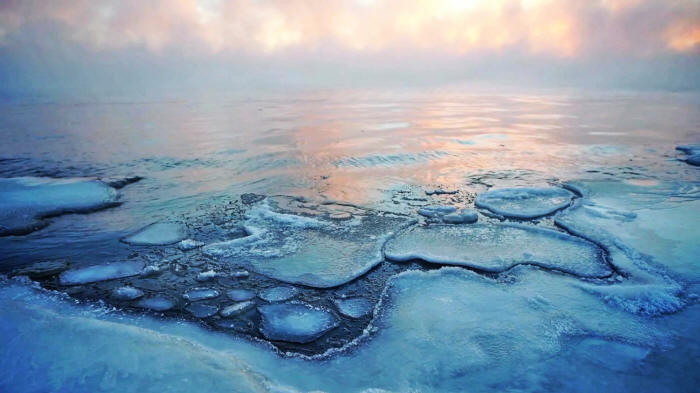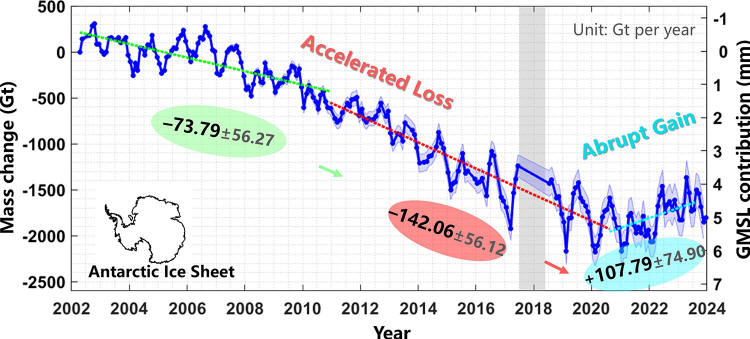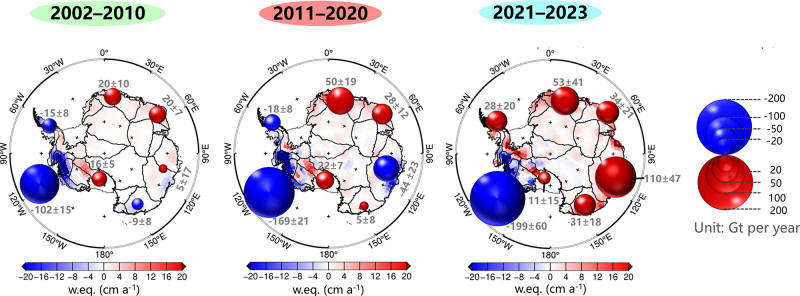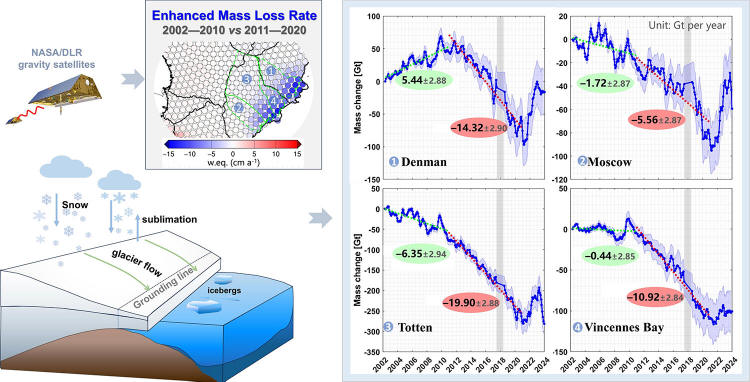|
by Science China Press has historically lost mass, significantly contributing to sea-level rise, with intensified losses in West Antarctica and parts of East Antarctica, particularly from 20112020. However, between 2021 and 2023, driven by anomalous precipitation, the AIS experienced a record-breaking mass gain, even reversing trends in critical glacier basins like
Totten, Moscow,
Denman, and Vincennes Bay. East Antarctica's glaciers reversed mass loss, slowing global sea level rise...
Since March 2002, the
GRACE (Gravity Recovery and
Climate Experiment) mission and its successor,
GRACE-FO (GRACE Follow-On),
have provided valuable data to monitor changes in ice mass across
the AIS.
However, a recent study led by Dr. Wei Wang and Prof. Yunzhong Shen at Tongji University has found a surprising shift:
(April 2002December 2023) derived from GRACE/GRACE-FO satellite gravimetry. Ellipses highlight period-specific mass change rates, while the grey shadow indicates the data gap between missions. Credit: Science China Press
This accelerated mass loss was primarily related to intensified mass depletion in West Antarctica and the WL-QML region of East Antarctica.
However, a significant reversal occurred
thereafter, driven by anomalous precipitation accumulation, the
AIS gained mass at a rate of
107.79±74.90 Gt/yr between 2021 and 2023. The Antarctic's Changing Face, Three Phases of Ice Mass Evolution. Spatial distributions of mass change rates over the AIS and its regions for three sub-periods.
Credit: Science China
Press
In contrast, during 20212023, it exerted a
negative contribution, offsetting global mean sea level rise at a
rate of 0.30±0.21 mm/yr.
Enhanced mass
loss of the Totten, Moscow, Denman, and Vincennes Bay glacier
basins, East Antarctica
...exhibited mass loss intensification with a rate of 47.64±8.14 Gt/yr during 2011-2020, compared to 2002-2010, with the loss area expanding inland.
The researchers explained,
Spatiotemporal patterns of mass change rates (20022020) for Totten, Moscow, Denman, and Vincennes Bay glacier basins. Gray box: rate differences (20112020 minus 20022010); light blue boxes: time series with epoch rates (elliptical markers), where the gray shadow denotes GRACE-GRACE-FO data gap. Credit: Science China Press
Their pronounced ablation patterns already
constitute a critical climate warning signal, warranting greater
scientific attention to their stability.
|





